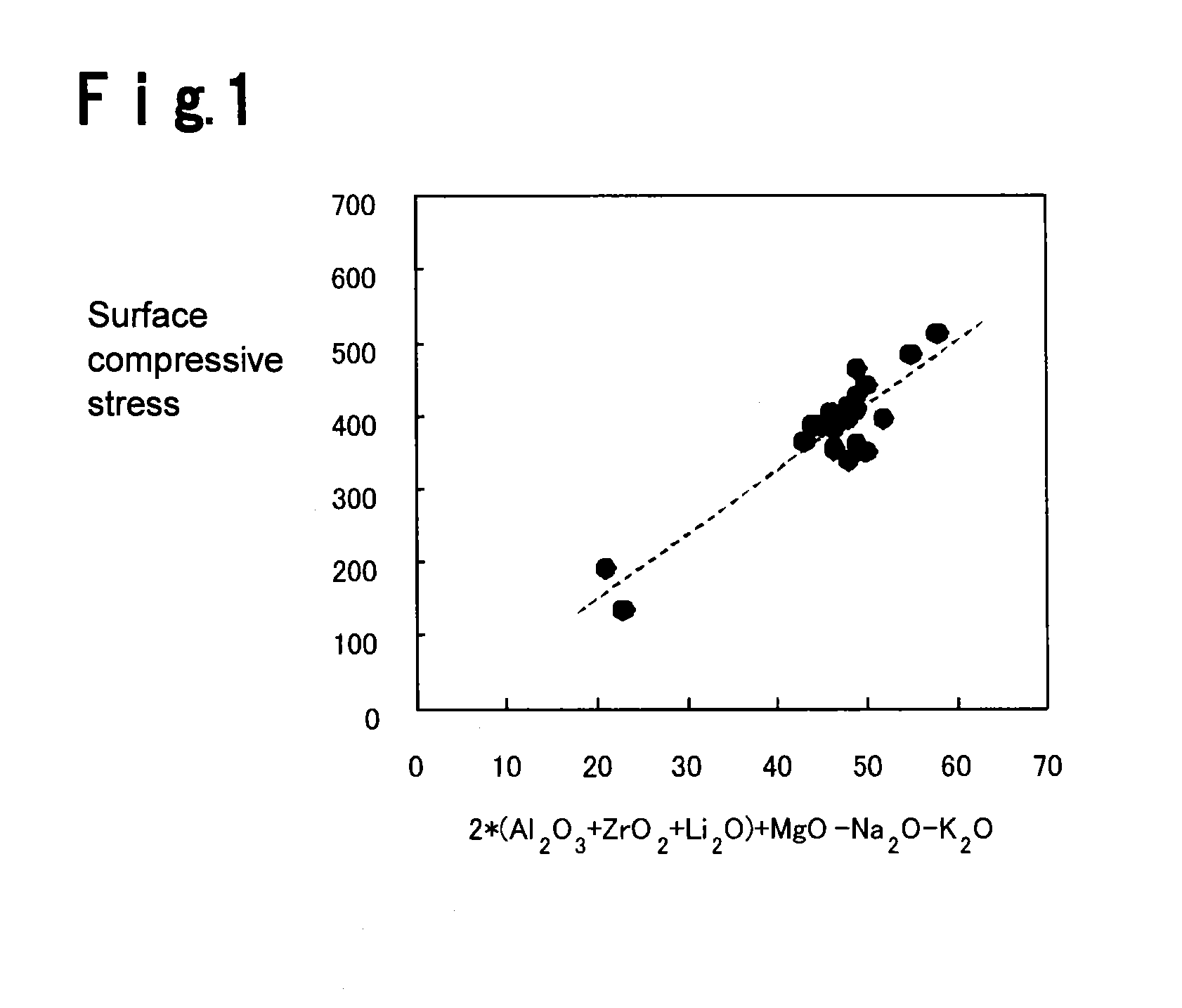Method for producing chemically tempered glass, and glass for chemical tempering
a technology of chemical tempering and tempered glass, which is applied in the direction of optics, digital data processing details, instruments, etc., can solve the problems of high probability of breakage, inability of cover glass to accomplish the essential role, and sometimes broken cover glass itself, etc., to achieve sufficient strength, sufficient strength, and sufficient strength of glass plate
- Summary
- Abstract
- Description
- Claims
- Application Information
AI Technical Summary
Benefits of technology
Problems solved by technology
Method used
Image
Examples
examples
[0109]With respect to Examples 1 to 45 in Tables 1 to 5, glass raw materials were suitably selected to have compositions as represented by mole percentage in columns for SiO2 to K2O and weighed to be 350 g as glass. To the weighed raw materials, sodium sulfate was added in an amount corresponding to 0.2% of the mass of the weighed raw materials, followed by mixing. Then, the mixed raw materials were put into a platinum crucible, which was then put in a resistance heat type electric furnace at 1,600° C., and the raw material mixture was melted for 3 hours, defoamed and homogenized. The obtained molten glass was cast into a mold and maintained at a temperature of Tg+20° C. for one hour, and then cooled to room temperature at a rate of 1° C. / min to obtain a glass block. The glass block was cut and polished and finally both surfaces were mirror polished to obtain plate-form glass having a thickness of 1.0 mm.
[0110]In these Tables, X is 2×(Al2O3+ZrO2+Li2O)+MgO−Na2O−K2O.
[0111]Examples 1 t...
PUM
| Property | Measurement | Unit |
|---|---|---|
| temperature | aaaaa | aaaaa |
| mole percentage | aaaaa | aaaaa |
| mole percentage | aaaaa | aaaaa |
Abstract
Description
Claims
Application Information
 Login to View More
Login to View More - R&D
- Intellectual Property
- Life Sciences
- Materials
- Tech Scout
- Unparalleled Data Quality
- Higher Quality Content
- 60% Fewer Hallucinations
Browse by: Latest US Patents, China's latest patents, Technical Efficacy Thesaurus, Application Domain, Technology Topic, Popular Technical Reports.
© 2025 PatSnap. All rights reserved.Legal|Privacy policy|Modern Slavery Act Transparency Statement|Sitemap|About US| Contact US: help@patsnap.com

